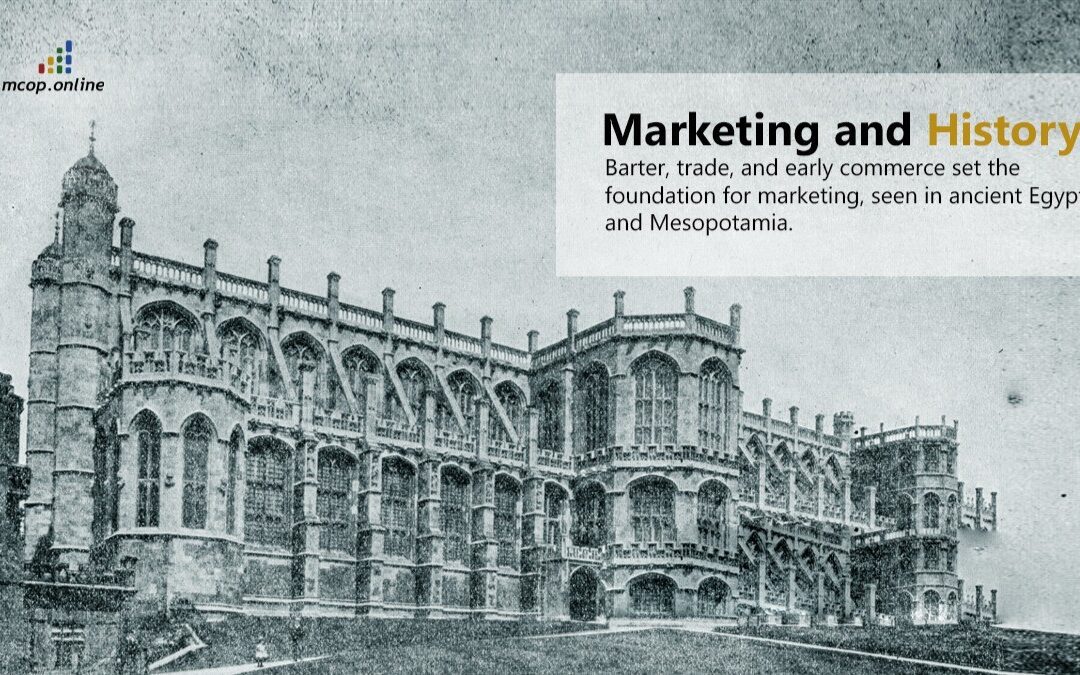Walking through business markets thousands of years ago was not like how we do it today. There was no money, no big signs, no cash registers—just traders shouting, bargaining, and trying to sell their goods.
Back then, if you wanted food, clothes, or pottery, you’d have to trade for it. But it wasn’t as simple as just swapping goods. Each trader had to make their items sound valuable, convincing others why they were worth the trade. This was marketing’s first chapter: creating value, building trust, and standing out.
The First Sales Pitches: Barter in Action
In these ancient marketplaces, a fisherman would trade his catch for wheat, or a potter would swap clay jars for fabric. But it wasn’t just about what they had; it was about how they sold it. Picture a potter saying, “This jar? It’s made with the finest clay from the riverbed. It’ll hold water all summer!” These exchanges were the first “sales pitches”—people learned how to make their goods sound special, giving birth to the art of persuasion that we still see in marketing today.
Trade Routes: Where Commerce Became Cross-Cultural
As people travelled more, they found new opportunities for trade. Ancient trade routes, like the Silk Road, became the first international “business market.” Goods from one region would end up miles away, introducing new products and ideas to different cultures. But with so many traders competing along these routes, they had to find ways to stand out.
Traders started developing “brands.” They would mark their goods with symbols, patterns, or unique designs to signal quality or origin. Picture a merchant marking his fabric with a distinctive stamp or packaging his spices in a unique container. This branding helped buyers recognize familiar, trusted sellers. It was an early lesson in differentiation and reputation-building.
Mesopotamia and Egypt: Pioneers of Early Marketing
In places like Mesopotamia, traders took things a step further by documenting their deals on clay tablets. These records made transactions official, adding a layer of trust and transparency. Buyers knew that if something went wrong, they had the trade terms in writing. It was a simple but powerful form of accountability that helped build customer loyalty—a key part of marketing even now.
Egyptian traders, meanwhile, knew the power of visual appeal. They carved advertisements for their goods in hieroglyphics on walls, stones, and in busy market squares. A passerby might see a message carved into a stone about a high-quality linen shop nearby. Egyptian merchants were also big on presentation, making their stalls look appealing and organizing products in ways that would catch the eye. These simple but effective strategies laid the groundwork for visual marketing.
How This Ancient Marketing Shapes Today’s World
It might be surprising, but the same marketing principles from thousands of years ago are still alive today. Building trust, creating a unique brand, and catching people’s attention are still what makes or break a business. Those ancient traders didn’t have fancy logos or social media, but they knew that to survive, they had to stand out, build relationships, and show customers the value of what they were offering.
There’s a whole journey between those early “sales pitches” and today’s online ads, filled with fascinating shifts and big innovations. And we’ve only scratched the surface!
There’s much more to explore in this history, from medieval markets to modern-day branding. Keep an eye out for the next post!!

